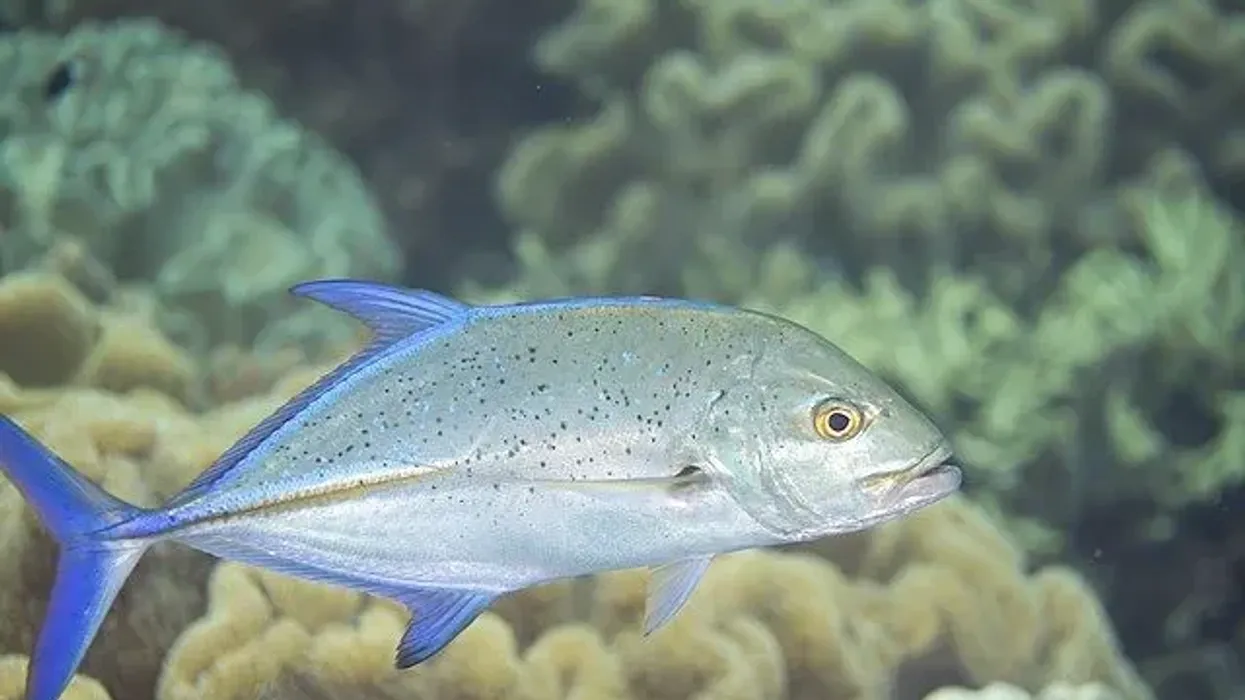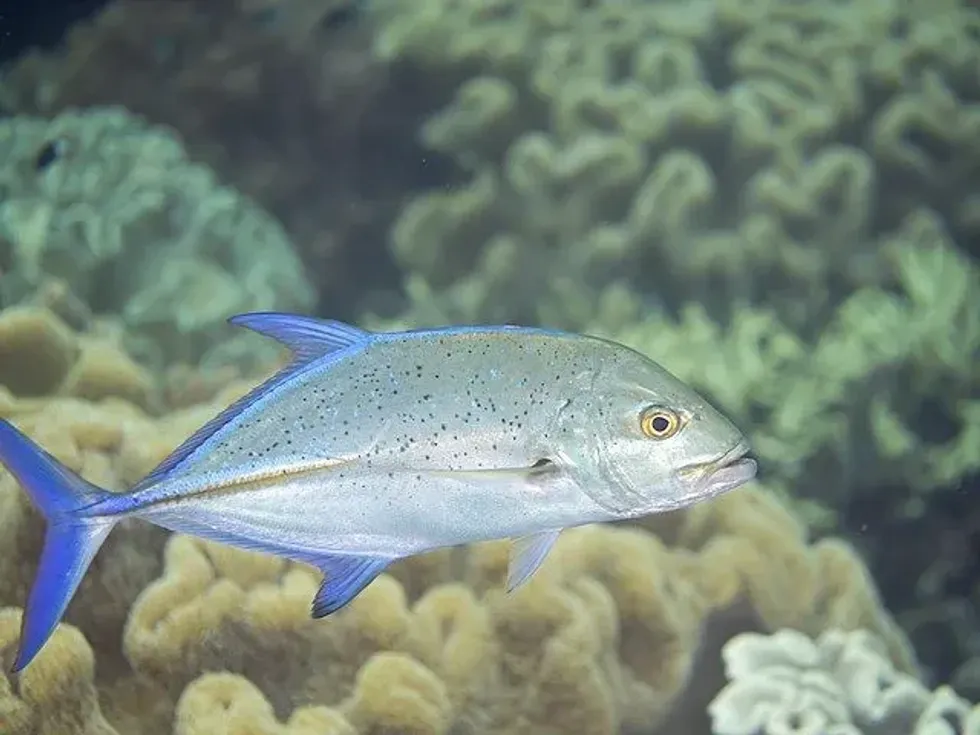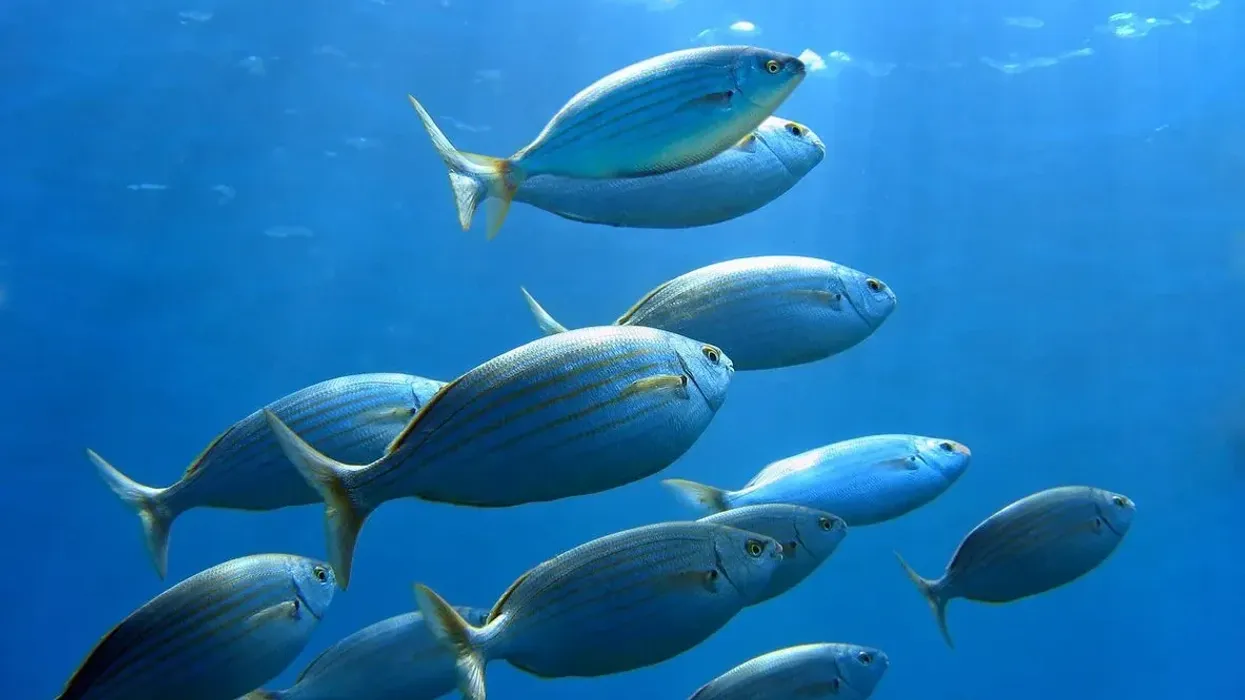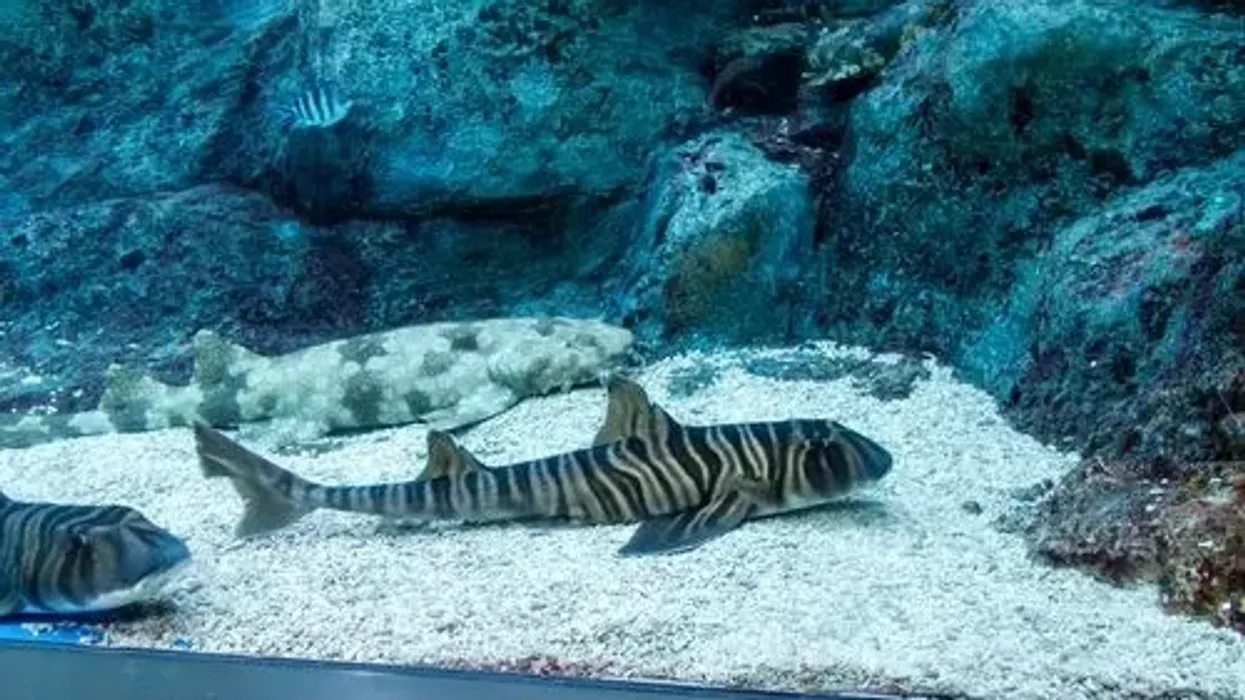The bluefin trevally (Caranx melampygus) is a beautifully colored species of marine fish widely distributed throughout the tropical waters of the Indo-Pacific.
Belonging to the jack family Carangidae, which also includes other fish species such as the jack mackerels, jacks, scads, and pompanos, the bluefin trevally is noted for the distinct electric blue hue of its second dorsal, anal, and caudal fins.
The dorsal (upper) half of the body is gray or iridescent brassy, imbued with blue, and adorned with small and scattered bluish-black spots.
The beautiful coloration is not the only unique and fascinating feature of Caranx melampygus; bluefin trevally is quite an aggressive feeder and a fast swimmer as well. In fact, they are even known to snatch food out of the mouth of sharks!
Mostly associated with coral reefs in coastal and pelagic ocean waters, the bluefin trevally is the smaller relative of the giant trevally.
They are extremely good predators and primarily feed on small fish, crab, shrimps, crustaceans, and cephalopods. In addition, the bluefin trevally (Caranx melampygus) displays a wide variety of hunting techniques such as reef ambushes, aggressive midwater attacks, and foraging encounters with larger animal species.
There is a lot more to know about these unique marine fish species known as the bluefin trevally. Read on to find out!
If you like what you read, do check out facts about the black ghost knifefish and Royal Gramma.
Bluefin Trevally Interesting Facts
What type of animal is bluefin trevally?
The bluefin trevally (Caranx melampygus) is a species of marine fish belonging to the jack family Carangidae.
What class of animal does bluefin trevally belong to?
The bluefin trevally (Caranx melampygus) belongs to the class Actinopterygii.
How many bluefin trevallies are there in the world?
The exact global population size of the bluefin trevally (Caranx melampygus) is not available.
Where does bluefin trevally live?
The bluefin trevallies are reef-associated marine fishes that live in pelagic and coastal areas of warm tropical ocean waters. They can be found in both offshore and inshore marine habitats, including estuaries.
Inshore habitats of this trevally species include seagrass meadows, sand flats, lagoons, shallow coral and rocky reefs, harbors, and bays. They can also be found in deeper offshore atolls, reefs, and bomboras. Juveniles prefer shallower, inshore waters.
What is bluefin trevally's habitat?
The bluefin trevally population is distributed throughout the tropical and subtropical waters of the Indo-Pacific with a range that covers the coasts of some major continents as well as numerous small archipelagos and islands.
Their easternmost range in the Indian Ocean includes the coast of South Africa and East Africa, up to the Persian Gulf and the Red Sea. The range of the species extends eastwards to include the coastlines of Pakistan, India, South East Asia, and northern Australia.
Besides, the species has also been recorded from the islands of Madagascar, Seychelles, Maldives, and Cocos Islands.
In the central Indo-Pacific region, the bluefin trevally is found throughout the islands and archipelagos of the Philippines, Indonesia, and the Solomon Islands, as well as along mainland China, Vietnam, and Malaysia in continental Asia. In the eastern central Pacific, the fish population is distributed from Mexico to Panama, including the Galápagos Islands.
The species' distribution in the western Pacific includes Hawaii, Western Samoa and Polynesia, and Tonga.
Subadults and juveniles prefer protected waters in inshore environments and can be found to a depth of at least 6.56 ft (2 m). On the other hand, the adults of the species are common in deeper and more exposed settings such as outlying bomboras and atolls near drop-offs and outer reef slopes.
Adult fishes can be found at depths of up to 600 ft (183 m).
Who does bluefin trevally live with?
The bluefin trevally may either be seen singly or in small schools.
How long does bluefin trevally live?
While no information is available regarding the exact lifespan of the bluefin trevallies, data suggests that these fishes can live for as many as 12 years.
How do they reproduce?
Bluefin trevallies are broadcast spawners, meaning that the fish releases its eggs into the water, and fertilization occurs externally. The time of spawning varies with the location; for instance, spawning occurs between April and November in Hawaii, whereas the African populations usually spawn between September and March.
These fishes are multiple spawners and are capable of reproducing as many as eight times a year and as often as twice in five days. The eggs are mostly laid during the night to minimize the chances of predation.
In the natural environment, the bluefin trevallies may lay between 50,000-4,270,000 eggs. Larger fishes will usually lay more eggs.
What is their conservation status?
According to the International Union for Conservation of Nature (IUCN) Red List of Threatened Species, the bluefin trevally (Caranx melampygus) is a species listed under Least Concern.
Bluefin Trevally Fun Facts
What does bluefin trevally look like?

The bluefin trevally has an oblong body with a silvery-brass or grayish body color and a silvery-white underside. Suffused with bluish hues, the middle and rear body is scattered with blue-black spots.
The operculum or the gill cover is devoid of any dark spots. The caudal, second dorsal, and anal fins are distinctly electric blue in color, which gives the species its common name. The pectoral fins and pelvic fins are white, with the pectoral fins having a yellowish tinge.
Juveniles lack bright blue fins. Instead, almost all their fins (including the dorsal fin) are dark, except a yellow pectoral fin.
The bluefin trevallies have a pointed snout. The blue dorsal fin is divided into two parts, each comprising spines, and soft rays.
The anal fin and pelvic fins also have spines and soft rays. The caudal fin is forked, and the pectoral fins surpass the length of the head.
The chest is entirely covered with scales. In addition, the lateral line (comprising sensory organs) has a prominent anterior curve with 55-70 scales and a straight section with few scales and more scutes.
While the lower jaw has a single file of loosely spaced conical teeth, the upper jaw consists of a series of outer canines and an inner row of smaller teeth. The eye is covered by an adipose eyelid.
How cute are they?
Keeping aside the fact that the blue hues on the body of this trevally species impart a beautifully distinct aura, the pointed and pouty snout gives the fish a cute and endearing look.
How do they communicate?
No information is available regarding how bluefin trevallies communicate.
How big is bluefin trevally?
The maximum length of the bluefin trevally can go up to 3.83 ft (117 cm). However, the most common length is around 1.96-2.62 ft (60-80 cm). Bluefin trevally is, on average, about half the size of the giant trevally.
How fast can bluefin trevally swim?
While the exact swimming speed of the bluefin trevally is unavailable, the fish is known to be a fast and strong swimmer, capable of swimming long distances in search of food.
How much does bluefin trevally weigh?
The maximum weight of the bluefin trevallies can go up to 96 lb (43.5 kg).
What are the male and female names of the species?
In general, male and female fishes do not have any distinct names.
What would you call a baby bluefin trevally?
A baby bluefin trevally would be called a fry or juvenile.
What do they eat?
Bluefish trevallies are carnivorous ambush predators that mainly feed on fish or any animal that is not too large to swallow. Small mackerel, sardines, anchovies, and reef fishes are some examples of fish that the trevallies prey on.
Besides, they also consume cephalopods such as squids and octopuses and crustaceans like crabs, shrimps, stomatopods, and isopods. Juvenile bluefin trevallies have a more crustacean-based diet compared to the adults.
Are they aggressive?
Bluefin trevallies exhibit aggressive behavior, particularly during feeding. They are deadly ambush predators that launch surprise attacks, approaching potential prey at high speeds.
When a school of prey fish is close enough, the trevallies attack the base of the school and then chase down individual fish. The bluefin trevally can get so aggressive and violent that it will drive away any other member of its own kind that poses as a possible competitor.
Would they make a good pet?
The sheer aggressive nature of the bluefin trevally makes it unsuitable for keeping as pets. However, the fish is bred in captivity due to a decline in the natural population of the species.
Did you know...
The first scientific description of the bluefin trevally (Caranx melampygus) was given in 1833 by the French naturalist Georges Cuvier. He based his descriptions on specimens collected off the island of Waigeo in Indonesia. In Latin, the specific word melampygus means black-spotted.
In Hawaii, the bluefin trevally fish is called omilu.
Bluefin trevallies mostly hunt during the day, especially at dawn and at dusk.
As ambush predators, the bluefin trevally assumes a dark-colored pigmentation and hides amidst corals close to where prey fish aggregate for spawning.
Bluefin trevallies often follow around large fish such as sharks, rays, and foraging fish like wrasse and goatfish, looking for opportunities to attack any disturbed fish or crustacean flushed out by the larger fishes.
Hawaii reports two hybridization events of the bluefin trevally species, one with the giant trevally and the other with the bigeye trevally.
Even though the bluefin trevallies are one of the top choices for recreational anglers in the Indo-Pacific region, the giant trevally is equally popular.
In commercial fisheries, the bluefin trevallies are caught by a variety of trapping and netting methods, including hook and line. Times of cold pushing sides when the water is cool and clear is the best time for fishing bluefin trevallies. The fish mainly prefers rocky regions and corals, where they hunt prey in small groups.
Bluefin trevallies are sold fresh, salted, or in frozen form. Their meat is dense, firm, and slightly oily. Barbecued, grilled, and lightly pan-fried trevallies are quite good to eat. Overcooking can make the meat dry.
Different types of bluefin trevally
The bluefin trevally is a single species with distinctive blue fins. However, it is also known as the bluefin kingfish, spotted trevally, blue-finned crevalle, blue ulua, and bluefin jack.
What fish can live with bluefin trevally?
Since the bluefin trevallies are deadly predators, it is practically impossible for other fish to co-exist with them in a tank or aquarium.
Here at Kidadl, we have carefully created lots of interesting family-friendly animal facts for everyone to discover! For more relatable content, check out these Mandarinfish facts and Stonefish facts pages.
You can even occupy yourself at home by coloring in one of our free printable Bluefin trevally coloring pages.









